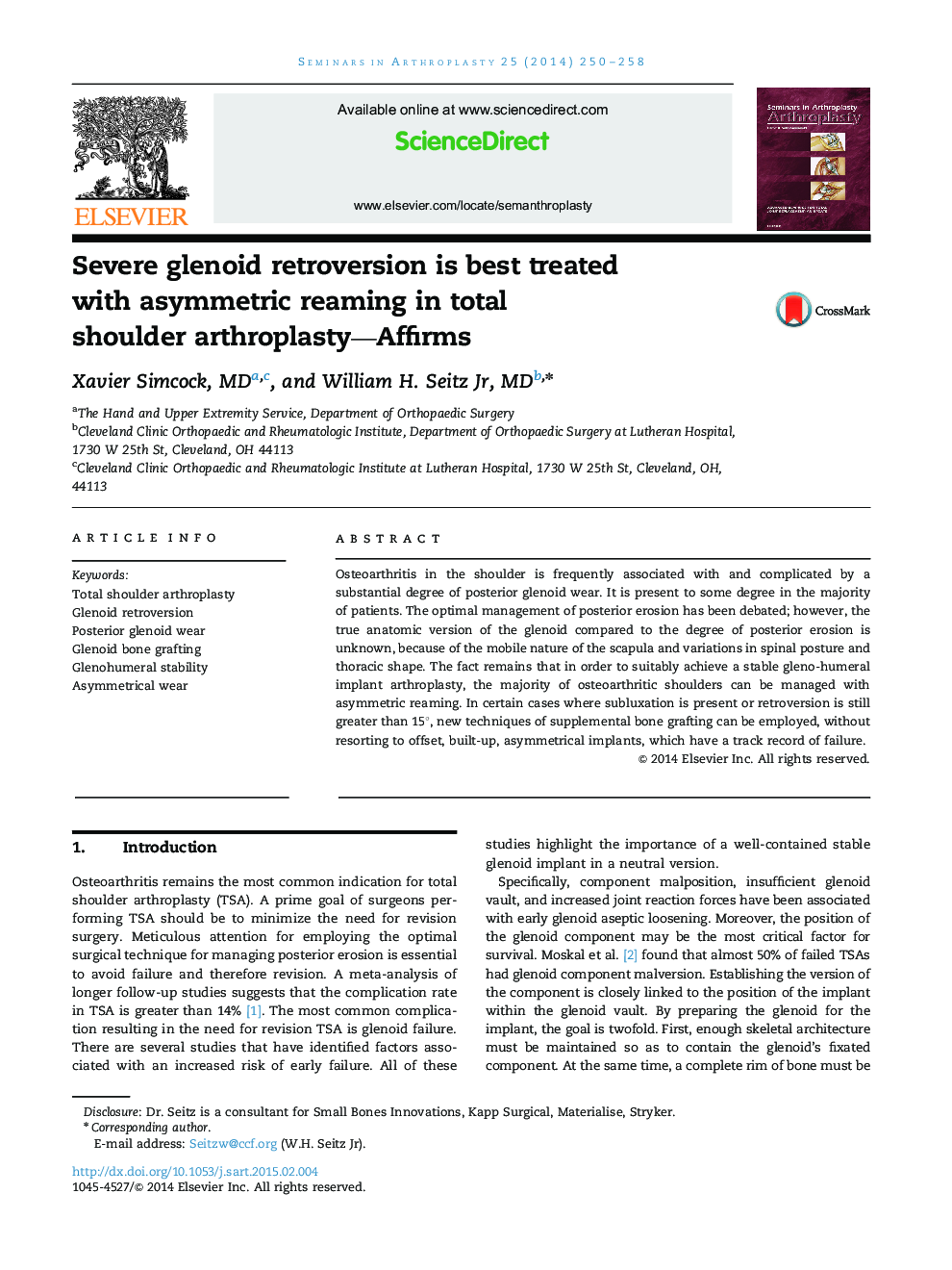| Article ID | Journal | Published Year | Pages | File Type |
|---|---|---|---|---|
| 4093882 | Seminars in Arthroplasty | 2014 | 9 Pages |
Osteoarthritis in the shoulder is frequently associated with and complicated by a substantial degree of posterior glenoid wear. It is present to some degree in the majority of patients. The optimal management of posterior erosion has been debated; however, the true anatomic version of the glenoid compared to the degree of posterior erosion is unknown, because of the mobile nature of the scapula and variations in spinal posture and thoracic shape. The fact remains that in order to suitably achieve a stable gleno-humeral implant arthroplasty, the majority of osteoarthritic shoulders can be managed with asymmetric reaming. In certain cases where subluxation is present or retroversion is still greater than 15°, new techniques of supplemental bone grafting can be employed, without resorting to offset, built-up, asymmetrical implants, which have a track record of failure.
